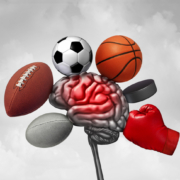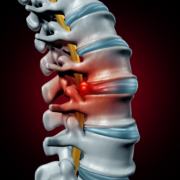Chiropractic Care for Headaches: Understand Your Headache
What Type of Headache Do You Have?
Over 90% of people will have at least one type of headache in their life. For some, occasional headaches can turn into a daily occurrence that disturbs both work and hobbies. In many cases, headaches aren’t associated with a disease but are instead a result of your daily habits and actions. The most common triggers for a headache include stress, fatigue, lack of sleep, hunger, and caffeine withdrawal.
Why it Matters:
Being aware of the type of headache you have and its triggers is the first step towards finding relief. Stress is a primary cause of all types of headaches. It’s important to remember that stress can be mental or physical. Physical stress can include muscle tension in your shoulders, head, and neck that commonly occurs due to long hours at the computer, unbalanced posture, or a lack of regular exercise.
The three most common types of headaches include tension, sinus, and migraine headaches.
1. Tension Headaches: Usually felt across the forehead and last a few hours.
2. Sinus Headaches: Typically occurs in the face, lasts a few hours, and is seasonal.
3. Migraine Headaches: Pain in the back of the head, temple, or eye that lasts a day or longer and can produce sensitivity to light and sound .
Now you’ve identified the type of headache you are usually affected by, you can begin taking proactive steps to reduce your risk. Getting enough rest and watching your caffeine intake is a good start. Research has also found that spinal adjustments are effective at reducing the frequency and severity of headaches. If you’ve been suffering from headaches, reach out to discover if we can help.
The Link Between Neck Pain and Headaches
Your head hurts. Could it be coming from your neck? You may be surprised to learn that neck pain and headaches are tightly linked together. A headache that starts from an issue in the neck is called a
cervicogenic headache. A cervicogenic headache is characterized by a dull pain that radiates from the neck to the back of the head. At times it may spread around the side or front of your head.
Why it Matters:
Cervicogenic headaches are common if you spend long hours at the computer each day. Neck stiffness and tender muscles around your head and shoulders often come along with cervicogenic headaches because of the position that many of us sit in all day. The added stress and strain on your upper back and neck muscles can add up over time and begin to cause occasional headaches. Without taking proactive steps to address the cause of the issue, you may notice that the headaches become more frequent and intense.
· Cervicogenic headaches can begin due to tightness in the shoulders, a stiff neck, or poor posture.
· Over 70% of people with cervicogenic headaches find significant relief with spinal adjustments.
· Spinal adjustments can reduce the severity and frequency of headaches.
To break the cycle of daily cervicogenic headaches, you need to address the underlying cause. Staying well hydrated (with water!), stretching at least every hour, and setting your workstation up ergonomically are all important to reduce your headache risk. If you still notice that headaches are bugging you, have pain, or limited neck range of motion, call us for a complete evaluation and plan of care to get well and stay well.
How to Get Rid of Daily Headaches
If you notice that your headaches are becoming more frequent and intense, it can be troubling. Daily head- aches can make it challenging to have a high quality of life and can affect your work and home life. The good news is that many of the most common types of headaches can be reduced or even eliminated by changing just a few of your daily habits.
Why it Matters:
Stress and tensions are two of the biggest triggers for tension headaches. Chronic headaches can cause your nervous system to become sensitized. That means each day; it takes less “stimulus” to kickstart a headache. Sensitization can become a vicious cycle, especially if your days are filled with repetitive motions. One of the best ways to reset your system and decrease sensitization is through movement.
Whether you prefer yoga, stretching, or massage, movement of your spine and body can ease the tensions associated with headaches.
Symptoms of Tension Headaches include:
· Dull, aching pain in the head and neck.
· Pressure and tightness across the sides, front, and back of your head.
· Tenderness in your shoulders, head, and neck.
Movement and exercise are key to life and one of the most powerfully simple ways you can break a cascade of daily headaches. If you’re struggling to get moving because of the pain, let us know. We’re happy to work with you to develop a comprehensive plan to help you reduce the frequency and severity of your headaches starting today.
Headache Medications Cause Headaches
One of the primary side effects of many prevalent headache medications is, well…more headaches. That’s right; rebound headaches are caused by taking the same medications used to find relief. If that sounds bizarre, it is. Even taking medications more than just a few days may trigger overuse, or rebound, headaches.
Why it Matters:
Taking care of yourself and creating healthy habits each day can prevent most headaches. If you find your- self reaching for over-the-counter pain medications more than once per week, you may be putting yourself at risk for rebound headaches. Most headache medications aren’t designed to be used frequently because they simply address the symptoms, not the cause of the problem. As you take medication, your body can become sensitized, meaning you need to take more medication to achieve the same result. This can lead to a downward spiral and cycle of chronic rebound headaches.
Here are a few ways to naturally reduce your risk of headaches.
· Get Enough Sleep: Going to bed and waking up at the same time each day helps your body maintain a natural rhythm .
· Reduce Your Stress: Plan, manage your daily schedule, and make stress-busting activities like yoga or meditation a part of your lifestyle.
· Exercise Regularly: Movement and exercise releases endorphins that help your brain and body feel good and block pain signals to your brain.
Medications aren’t very effective at reducing the frequency or severity of headaches. Masking the symptoms with drugs can work now and again, but it’s not a sustainable way to find long-lasting relief. To find last relief, you’ll want to follow the latest healthcare guidelines that recommend movement-based care, such as chiropractic. We believe everyone should have the opportunity to live their life free from chronic headaches.
Science Sources:
Chiropractic Therapy for Migraine. Eur J Neurol. 2017. Spinal Manipulation for Chronic Headache. Spine J. 2010. Chiropractic Therapy for Headache. BMC Res Notes. 2017.
Manual Therapy Effect on Tension Headache. Eur J Phys Rehabil Med. 2016. Tension Headache. MedlinePlus. 2019.










